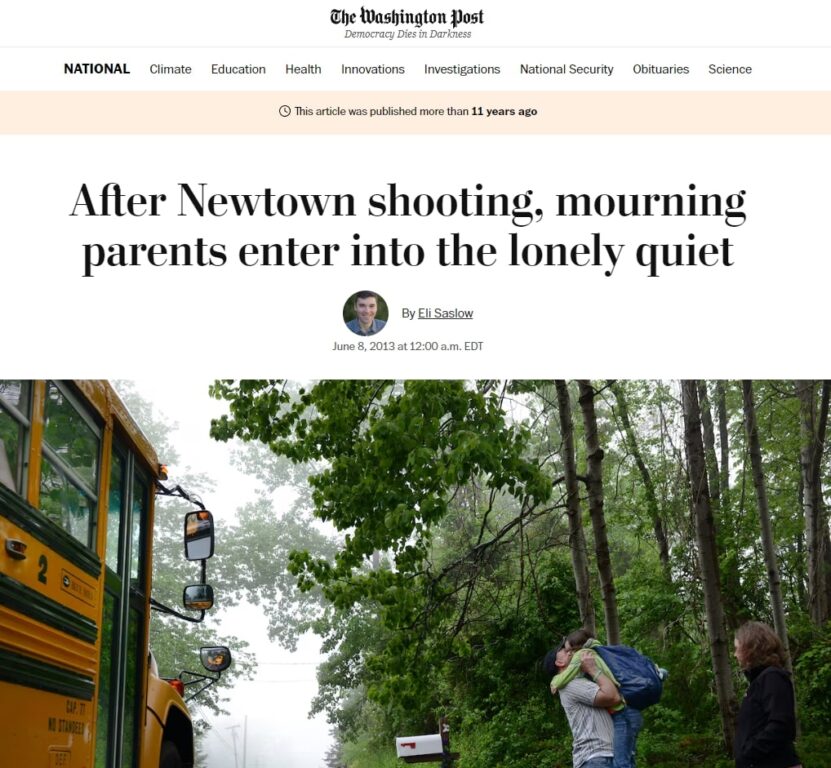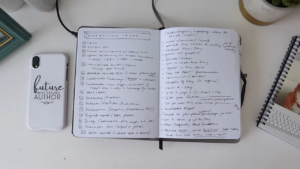We are all influenced every day by the news stories we see reporting on world events and issues in our communities. The media plays a big role in shaping how we understand and react to what’s happening around us. This is especially true when bad things happen like natural disasters, acts of violence, or other traumatic situations.
The news does an important job of letting us know the basic details – what took place, how much damage was caused, how many people were hurt or lost their lives. But sometimes it feels like they only want to focus on the saddest and scariest parts of the story, like the tragedy, despair and losses people faced.
Then before we know it, they’ve moved on to the next headline, rarely checking back in to see how real people are coping or what they’ve learned getting through these tough times. We only hear follow up stories on important anniversaries, but don’t regularly find out about the hard work of recovery and building resilience that communities undertake every day. Studies show that constantly hearing about disaster and suffering can start to weigh on our own mental health and sense of safety if that’s all we’re given.
It makes me wonder, what if the media also made as much of an effort to report on recovery and renewal as they do on initial devastation? This is an important question for organizations like Images and Voices of Hope that work to empower communities. They’ve coined a term, “Restorative Narratives,” for stories highlighting how restoration and strength can be found even in difficulty. While not a new idea, the name acknowledges these uplifting stories deserve attention too in helping us process crisis events together.
For over a year, we’ve been studying this genre and have identified media makers who have made resilience and recovery a signature part of their work. Some of them — including Los Angeles Times reporter Anh Do, New York Times reporter Andrea Elliott and San Francisco Chronicle reporter Kevin Fagan — spoke about their work at our 2014 ivoh Mindful Media Summit in June. In 2013, we convened 35 media practitioners to create a working definition of Restorative Narratives. Through the course of our research and conversations, we’ve learned a lot about what Restorative Narratives are — and aren’t.
What is a Restorative Narrative?
A restorative story shows how individuals and communities learn to rebuild and heal after difficult times. While often about mending after tragedy, they can also focus on restoration amid chronic struggles – like Detroit overcoming bankruptcy or alleviateing poverty in an area. These uplifting tales appear in many forms – news reports, documentaries, photos, games, and more. Additionally, they:
- Capture hard truths. They don’t ignore harsh realities folks endured, exploring rough emotions honestly. But instead of dwelling on what’s broken, they center on what’s being fixed. Sharing renewed hope and opportunities.
- Highlight meaningful progress. They show steps forward – from heartache to optimism, crisis to possibility, suffering to recovery. Important to see not just where someone is, but how they got there.
- Reveal shared experiences. Speaking to truths others relate to, and maybe teaching something along the way. Hoping more resilience stories empower communities to keep striving. Research confirms resilience grows with practice.
- Are long-term. Mindful recovery takes time. Stories may not bear fruit for months or years post-tragedy. Pursuing requires patience as realities unfold.
- Feel genuine. True to a person or place’s journey. Deeper looks enable validating authenticity.
- Center strength. Discuss folks’ strengths and fueling others’ resilience. Instead of dwelling on dire straits, these tales motivate by lifting up what’s workable. After one summit, a journalist said these help understand “the world in its fullness, diagnose problems thoughtfully, envision practical pathways up and ahead.”
What isn’t a Restorative Narrative?

- Stories utilizing labels over life experiences. “Human interest” or “features” risk glossing rich inner worlds we all hold. Restoration honors rebuilding strength, in one’s own way and time.
- Accounts giving premature hope before understanding diverse journeys of grieving. Not all exhibit surface resilience in crisis; some privately cope with cuts too deep to ignore.
- Tales hastily sealing pain as if recovery comes without tears. Healing is gradual and periodic; renewal finds light through both triumph and stumble.
- Portrayals omitting resilience may bloom where planted, however gently. Restoration shares growing pains alongside growing joy.Depictions in the rawest moments before different rates of processing tragedy. A youth bravely facing community still holds private sorrows to nurture.
What are some examples of Restorative Narratives?

- “The Girl in the Closet“: An eight-part Dallas Morning News series about Lauren Kavanaugh — a 20-year-old woman whose mother and stepfather tortured, sexually abused, and starved her for six years when she was a child. The story, which was a 2014 Pulitzer finalist, focuses on how far Kavanaugh has come since then. Find out more from the interview with reporter Scott Farwell. It took Farwell nine months to get Kavanaugh to open up — a reminder that Restorative Narratives require patience.
- “For Kym Pham’s Hospital Team, Tender Care and a Hard Goodbye“: In this story, Los Angeles Times reporter Anh Do transformed reports of a brutal attack against a young woman into a compelling story about compassion, care, and love. While many Restorative Narratives take months to report, others — like this one — can be done in a few days time.
- Josh Haner’s New York Times video about Jeff Bauman, a Boston Marathon bombing survivor. The video, which won a 2014 Pulitzer, highlights Bauman’s determination to keep moving forward even though he lost both of his legs during the bombing. “When something bad happens,” Bauman says, “people need something else to look to to make it better.”
- Ishmael Beah’s book, “Radiance of Tomorrow,” about his time as a child soldier in Sierra Leone. Beah captures the resilience of the human spirit while acknowledging that stories of resilience don’t always end on a “happy” note in the traditional sense of the word. “Certainly the happy ending necessarily doesn’t mean that, you know, everybody goes prancing in the sunlight and dancing,” Beah told NPR. “Sometimes it’s the possibility of things about to change…”
- “The Survivor Diaries“: A CNN documentary about Boston bombing survivor Adrianne Haslet-Davis’ efforts to recover from the loss of her leg.
- “‘Tsunami’ docudrama shines spotlight on resilience in a disaster’s aftermath“: Two playwrights traveled to Japan in the aftermath of the tsunami and created a resulting play about the stories of recovery and resilience that they uncovered there.
- “Line of Sight”: A short film about how a blind man found strength in art. The film’s creator is Stephen Menick.
- “Surviving the Finish Line“: A New York Times feature about Boston bombing survivors. The piece features Restorative Narrative vignettes.
- “After Newtown Shooting, Mourning Parents Enter into the Lonely Quiet“: A Washington Post story about how parents who lost children in the shooting are learning to cope.
- San Francisco State University’s work in Fukushima. A group of students traveled Fukushima, Japan, last summer on the aftermath of the 2011 tsunami, earthquake and nuclear power plant disaster. During their trip, students looked for stories about how communities were rebuilding and finding meaningful pathways forward. San Francisco State University journalism professor and ivoh board member Jon Funabiki, who ran the project, told ivoh.org: “We forget what happened in Fukushima, we forget what happened in New Orleans, we forget what happened with Haiti. We expect that things will get resolved quickly. And if they aren’t, we allow the event and the people to be lost in history. … We wanted to make sure that the sum total of our project is not focused only on the tragedy. We didn’t want to diminish the significance of the disaster and everything that they have lost, but we didn’t want to be stuck there.”
How does research support the need for Restorative Narratives?
We often hear why the media is to blame and can’t be trusted. (Americans’ trust in the media reached an all-time low in 2012, and increased only slightly in 2013, according to Gallup.) There’s a need for media criticism that draws attention to what’s wrong and what needs to be improved. But there’s also great value in showcasing content that acts as a force for good in society. New research reveals that people increasingly want to consume — and share — this type of content. Time Magazine’s Eliana Dockterman reported:
“Researchers are discovering that people want to create positive images of themselves online by sharing upbeat stories. And with more people turning to Facebook and Twitter to find out what’s happening in the world, news stories may need to cheer up in order to court an audience. If social is the future of media, then optimistic stories might be media’s future.”
People’s appetite for news is changing, and with that change comes opportunity — to tell stories that shift the traditional journalistic focus from tragedy to recovery. Too often, journalists tell stories about the most dismal problems, thinking that “if it bleeds, it leads.” These stories, though, can leave people feeling like the world is a cold and callous place.
A new study conducted by NPR, the Robert Wood Johnson Foundation, and Harvard School of Public Health found that one in four people say they experienced a “great deal” of stress over the past month. Consuming news, they said, was one of the biggest contributors to their day-to-day stress. The study is similar to one that the University of California at Irvine released last December. UC Irvine found that repeatedly consuming traumatic news can cause acute stress.
“We suspect that there’s something about repeated exposure to violent images or sounds that keeps traumatic events alive and can prolong the stress response in vulnerable people,” one of the study’s authors wrote. “There is mounting evidence that live and video images of traumatic news events can trigger flashbacks and encourage fear conditioning. If repeatedly viewing traumatic images reactivates fear or threat responses in the brain and promotes rumination, there could be serious health consequences.”
By contrast, research has found that uplifting news can motivate people to do good in the world. A 2011 study in the Journal of Psychology and Personality and Social Psychology looked at the warm, uplifting feeling people get from watching someone act with compassion or courage — a feeling that psychologists refer to as “moral elevation.” This feeling of elevation supports people’s belief in the goodness of humanity, induces positive emotions, and inspires people to act more altruistically.
Similarly, positive psychologist Barbara Frederickson has found that witnessing and hearing about positive emotions such as kindness, generosity, compassion, gratitude, etc., can “broaden the scopes of attention, cognition and action and build physical, intellectual and social resources — enduring personal resources, which function as reserves to be drawn on later to manage future threats.”
As evidence of the impact of images and messages of strength continues to mount, we want to share the research and help build the capacity of those in media to work as agents of benefit to the world. This goal inspires us and is woven throughout our work.
If you’re passionate about promoting positive content through social media or other online channels and interested in contributing to a shift towards more positive and uplifting content, consider exploring Jooble for jobs as a content reviewer. This role will allow you to play a crucial part in shaping the narrative and promoting stories that inspire and uplift instead of “generating” more stress.
When did Ivoh’s inquiry into Restorative Narratives begin?

We came up with the term “Restorative Narrative” after reading Rachel Aviv’s December 2012 New Yorker story about how The Newtown Bee, a small community newspaper, was responding to the Newtown shooting. Curtiss Clark, the paper’s editor, really listened to what readers wanted during that time; he asked them questions and acted on their responses. He found himself thinking about the paper’s greater purpose and about ways in which the paper’s reporters could be supporters.
As Aviv writes:
“He didn’t care if national reporters thought that he lacked a ‘hard-ass clinical angle.’ When he learned that a camera crew had rung the doorbell of parents who had just lost their child, he wrote a letter to the New England Newspaper and Press Association, urging the media to stop ‘invading the yards and space of grieving survivors.’ Another resident implored him, ‘Do anything in your power to get these media people out.’ In an editorial in a special edition of the Bee, published three days after the shooting, Clark counseled residents not to conform to the expectations of the ‘legions of journalists who had arrived in caravans of satellite trucks as if drawn by some dark star of calamity.”
Clark’s response made us think about how often the media swoops in during a tragedy’s immediate aftermath. It’s understandable; they need to be there to inform the public about what happened. But the resulting coverage sometimes comes across as insensitive, and after awhile, these “what happened” stories can lead to despair. The persistent focus on death and devastation ignores the fact that there are stories of resilience and recovery to be told.
What are Ivoh’s plans moving forward?
We plan to continue publishing stories about Restorative Narratives and highlighting good examples of them on ivoh.org. Along these lines, we want to partner with other organizations that are pursuing similar work, including The Solutions Journalism Network, Peace Journalism, The Transformational Media Initiative, and Constructive Journalism.
One of our goals moving forward is to get a better sense of the impact that Restorative Narratives can have on people and communities. To this end, we have developed a Restorative Narrative Fellowship Program, which launched in December 2014. The fellowship is affording five journalists the opportunity to spend six months telling Restorative Narratives in their communities. We expect the fellowship to become an integral, ongoing part of our programming and hope that it will inspire more media practitioners to embrace the Restorative Narrative genre.
We’d also like to develop some training and curricula around this emerging genre.
I’m Anastasia, and I’ve just wrapped up my postgraduate studies in literature. I absolutely love writing books. It’s my way of weaving new worlds and breathing life into the characters that keep me up at night. Literature isn’t just a field of study for me; it’s a canvas where I paint with words. Through my writing, I hope to connect with others who share my love for storytelling and to contribute something meaningful to the literary world.








